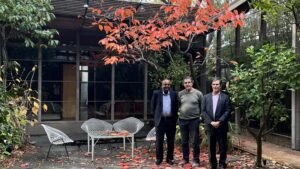Representatives of 25 cities in Indonesia recently gained knowledge and experience of the conservation of heritage buildings during a six-day workshop, hosted by UNESCO in cooperation with the Culture and Education Ministry, recently held in Jakarta. The workshop involved experts from the Center for Architectural Documentation Indonesia, the Indonesian Association of Architects (IAI) and Australia’s Network for Cultural Heritage Services (AusHeritage).
Workshop participants came from a range of tourism and cultural agencies, as well as the Kota Tua spatial management unit and the Public Works and Public Housing Ministry. Irakli Khodeli, a program specialist from UNESCO Jakarta, said that the workshop was an attempt to educate civil servants, architects, contractors and owners of heritage buildings on conservation techniques and adaptive re-use.
“We have high hopes that the knowledge will be of good use in these very capable hands,” he said in his speech on Friday.
According to Irakli, the event is part of the UNESCO-Indonesia Fund-In-Trust program called “Old City, New Vision: First phase project for the revitalization of Kota Tua, Jakarta, through sustainable tourism and heritage conservation”.
The event was divided into two main activities, a heritage clinic and in-field training when participants visited a number of historical places, including Fatahillah Square — the heart of the city’s old town, Kota Tua — and Gudang Timur, once the eastern warehouse of the Dutch East Indies Company in West Jakarta.
The sites served as the primary learning points, with participants given practical lessons on how to conserve or revitalize old buildings in groups, led by AusHeritage conservation experts Bruce Pettman, Joy Singh and David Mason. The experts then asked the participants to create a group report and presentation regarding the heritage sites.
“These reports also serve as take-home deliverables that could be shared with other cultural heritage conservation teams in the participants’ respective cities,” Irakli said. He added that each report had been presented to the class by the groups. Participants and experts received more than 20 cases, with issues ranging from legal frameworks and conservation to masterplan issues.
After the in-field training, the participants learned to discover and determine the cultural significance of heritage buildings in heritage clinic sessions, in which participants were assisted by 15 experts and architects. During the session, participants and experts worked in groups, acting as doctors to old buildings. They examined the buildings’ condition based on the description given by the stakeholders then gave suggestions on courses of action to take in order to serve the buildings.
See more at:

